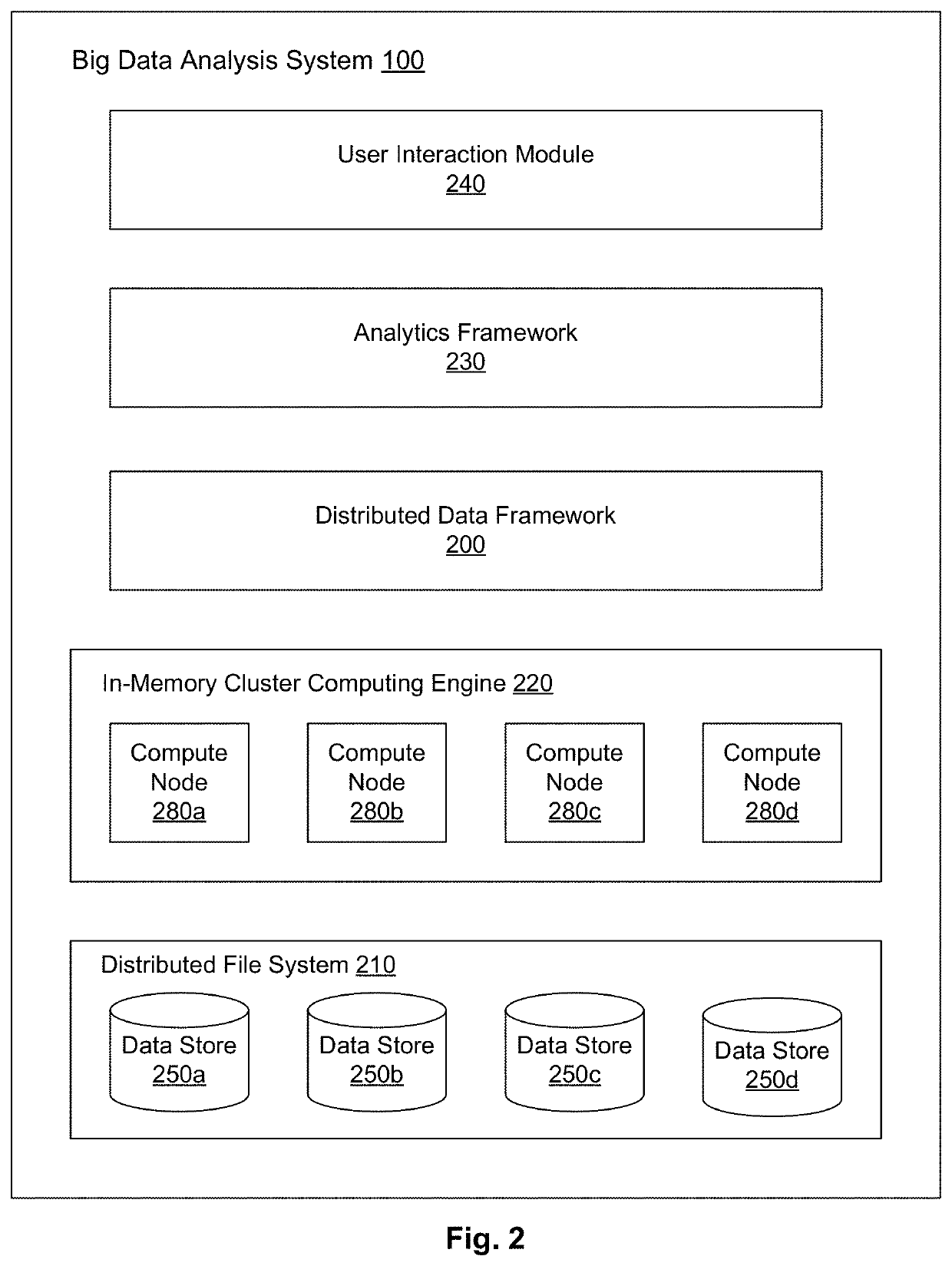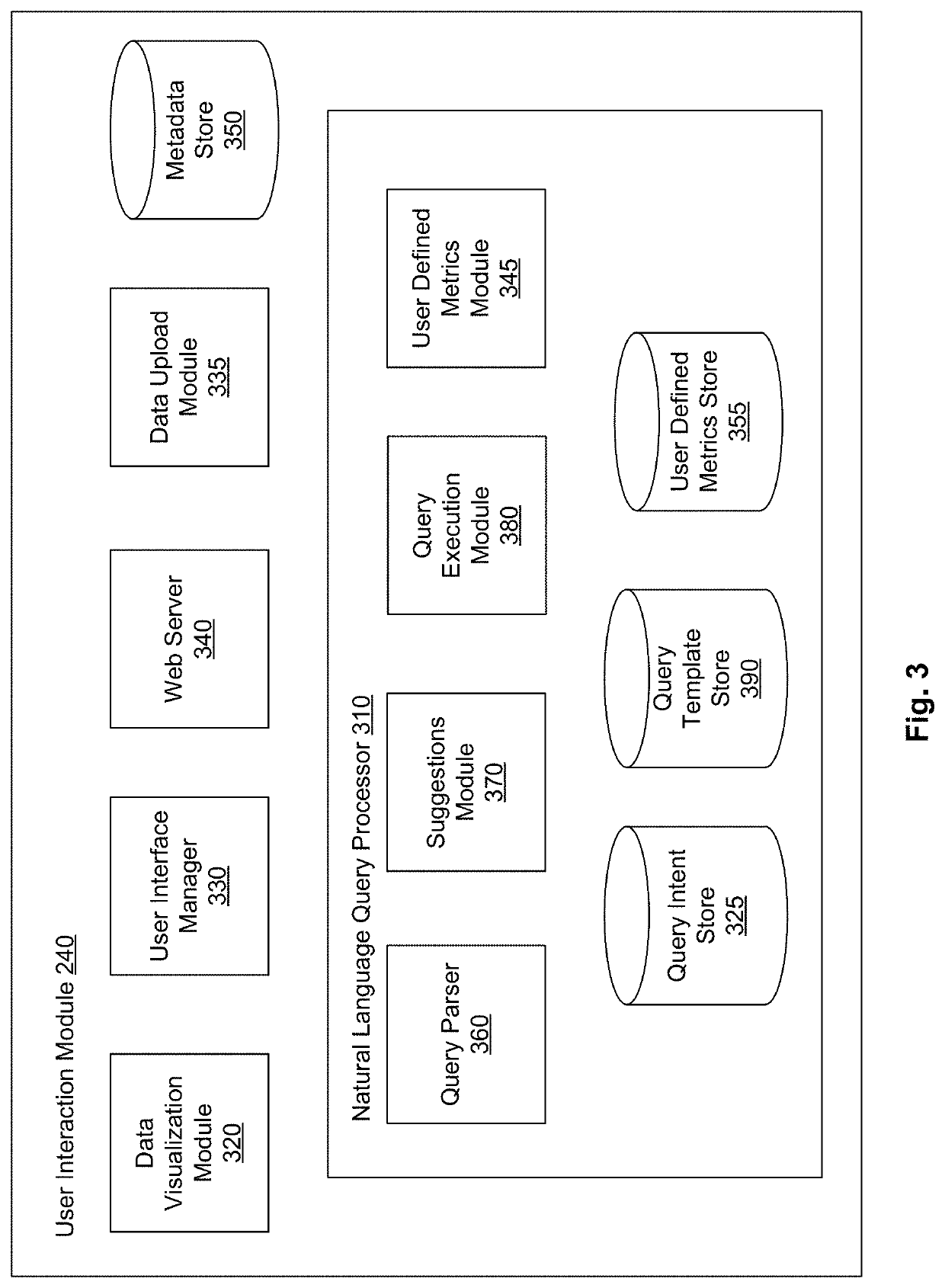Natural language queries based on user defined attributes
a query interface and user-defined technology, applied in the field of natural language query interfaces, can solve the problems of complex systems, software developers and programmers, and users performing cumbersome programming, and can not be compared to business experts or data scientists, and achieve the effect of improving the user experience and improving the user experien
- Summary
- Abstract
- Description
- Claims
- Application Information
AI Technical Summary
Benefits of technology
Problems solved by technology
Method used
Image
Examples
Embodiment Construction
[0024]A data analysis system allows users to perform analysis of data sets, for example, data generated by an enterprise. In an embodiment, the data analysis system is a big data analysis system that performs analysis of big data. Enterprises typically generate large amount of data via various mechanisms, for example, logs of various applications and operating systems executing on computers of the enterprise, data manually entered by operators, data received from third party applications, vendors and so on. Often data generated by large enterprises or by large distributed systems is so large and complex that traditional data processing applications such as traditional databases, spreadsheet applications, and so on are inadequate for processing the data. The capacities of conventional data processing systems keep increasing every year. Accordingly, the data that is considered big data at some point in time may not be big data at a later point in time. As a result, the threshold size ...
PUM
 Login to View More
Login to View More Abstract
Description
Claims
Application Information
 Login to View More
Login to View More - R&D
- Intellectual Property
- Life Sciences
- Materials
- Tech Scout
- Unparalleled Data Quality
- Higher Quality Content
- 60% Fewer Hallucinations
Browse by: Latest US Patents, China's latest patents, Technical Efficacy Thesaurus, Application Domain, Technology Topic, Popular Technical Reports.
© 2025 PatSnap. All rights reserved.Legal|Privacy policy|Modern Slavery Act Transparency Statement|Sitemap|About US| Contact US: help@patsnap.com



